Have you ever wished you could go back in time and visit China the way it was in ancient times? Below is the compilation of collection of famous ancient towns and villages in China.
Southwest China
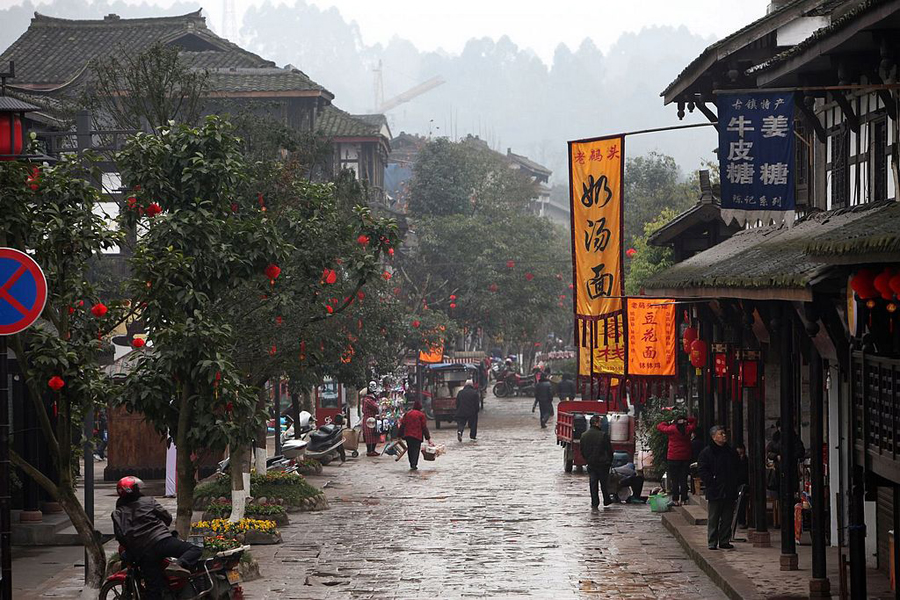
Pingle Ancient Town is about 90 Km west of Chengdu and about 20 Km away from Qionglai City where you need to transfer from Chengdu to Pingle. The town was formed as early as West Han Dynasty (150 B.C.). Pingle was an important town on the ancient South Sichuan Road and South Silk Road.
Pingle Ancient Town (平乐古镇): Pingle was built over 2,000 years ago to serve as a vibrant trade bezaar on the South Silk Road. The town at the mountain base is cladded with refreshing natural scenery and monuments of its thriving past.

Dali ancient town
Dali (大理): Dali is one of the most beautiful and relaxing places in China. Historically Dali was the political and cultural center of Yunnan and is therefore endowed with cultural sites and historical heritage.
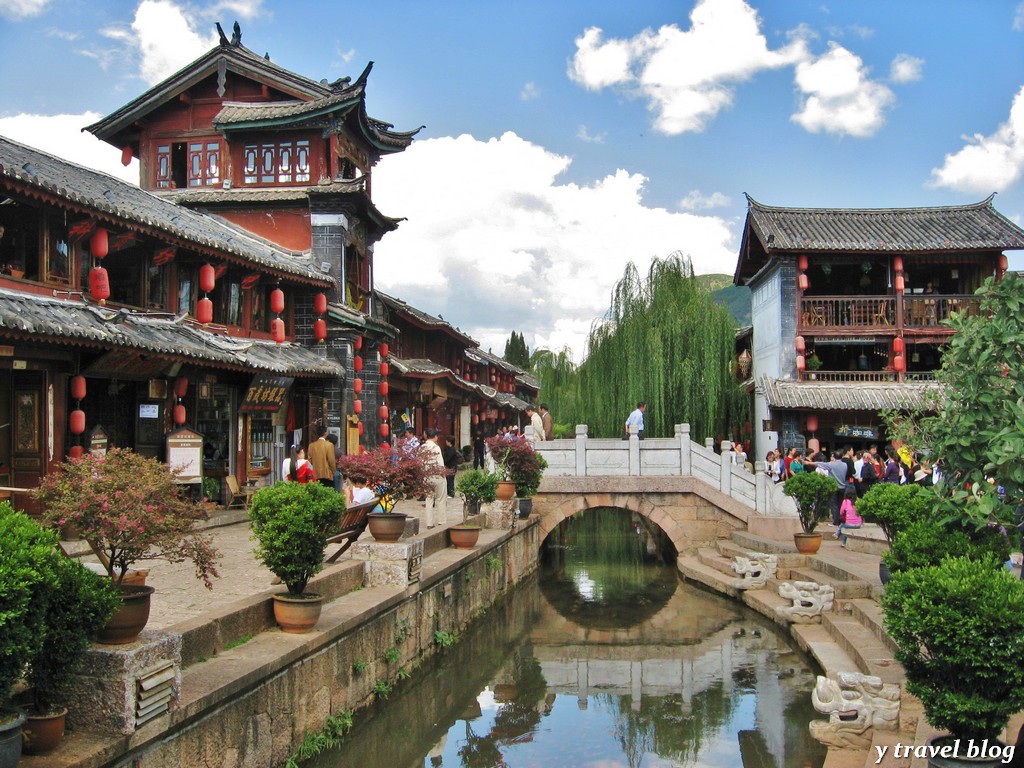
The Old Town of Lijiang is located in the northwest of Yunnan Province in China. It occupies an area of 912 acres and was first built in the late Song Dynasty and the early Yuan Dynasty, and has a history of more than 800 years.
Lijiang (丽江古城): Lijiang may spoil you. The aged wooden buildings decked with hanging red lanterns and local musicians playing the centuries old Naxi instruments in the time worn streets, display a lifestyle and culture that seems lost in time.
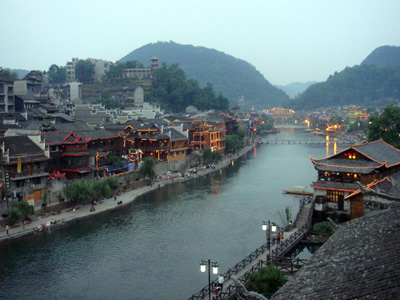
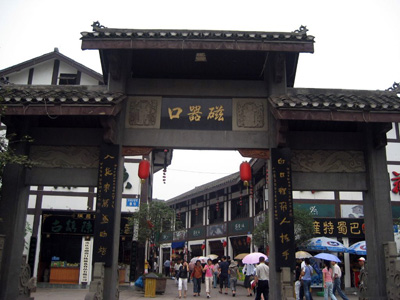
Ciqikou Ancient Town (磁器口古城): Porched on a hill and overlooking the Jialingjiang River, Ciqikou is an Ming Dynasty town. It was founded in 998 by emperor Zhenzong (998-1004) of the Song dynasty. It’s original name was Baiyan but during the Ming dynasty the name was changed to Longyinzhen and it became an important land and river port along the west bank of Jialingjiang River.
North China
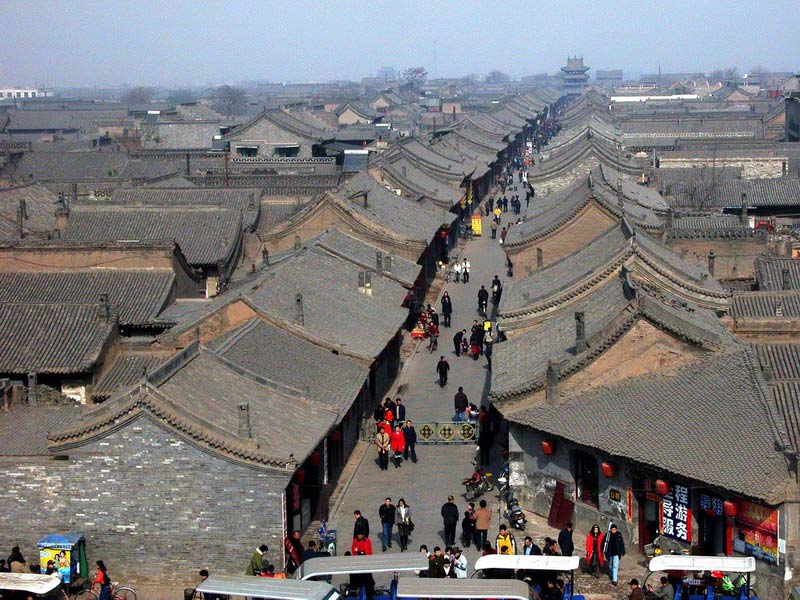
During the Qing Dynasty, Pingyao was a financial centre of China. Its history dates back some 2,700 years, and is one of the best preserved ancient cities in the known world.
Pingyao (平遥): Pingyao in Shanxi Province is a well-preserved Ming Dynasty town. The town features ancient buildings, flagstone streets and the living traditional lifestyle.
Northeast China
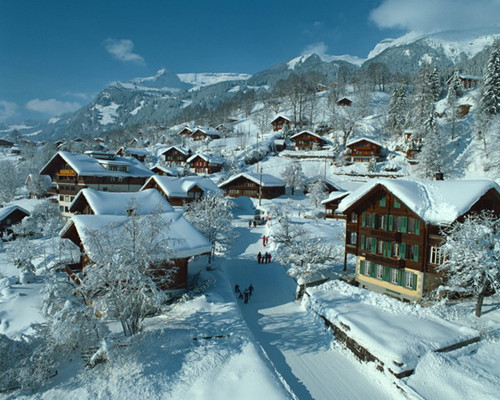
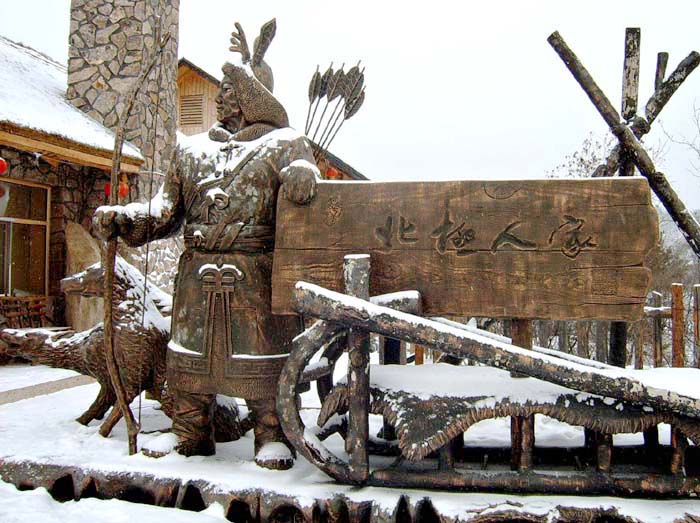

The Arctic Village is located in the far north of China and is known as the "city that never sleeps". Every time before and after the summer solstice, there are nearly 20 hours of sun light. If you are lucky, you can watch the colorful and dazzling northern lights. It is the best place to watch the Northern Lights and White Nights in the country.
Arctic Village (北极村): This small village at the north most point of China seems a place in another world. It's famous for the premiere vantage point to view the arctic lights.
East China
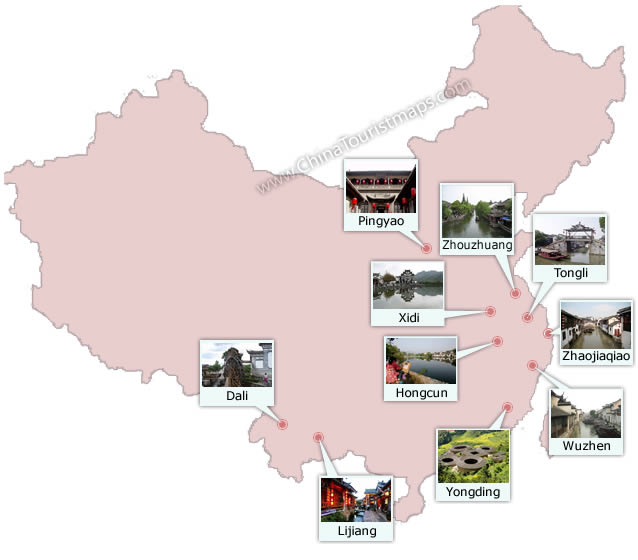
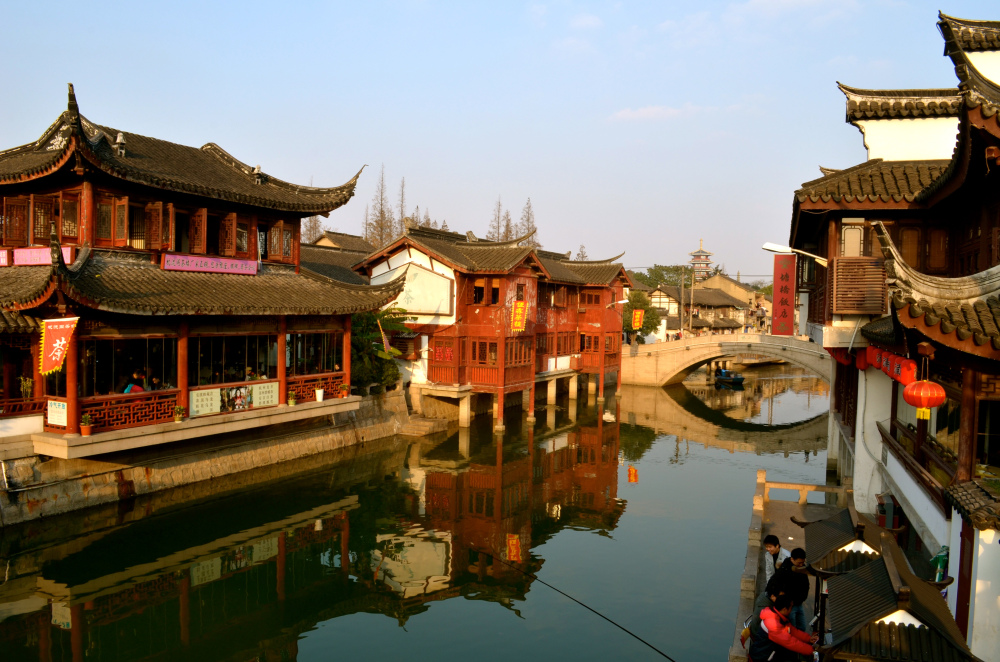
The town was built in Northern Song Dynasty (960-1126) and grew into a prosperous business center during Ming (1368-1644) and Qing Dynasties (1644-1911).
Qibao Ancient Town (七宝古镇): This town is a depiction of old Shanghai. Located in the center of Minhang District of Shanghai, only 18 kilometers (11.18 miles) from the downtown area, Qibao Ancient Town can satisfy your curiosity about ancient water townships without the bother of either long distance or the rush of crowds.
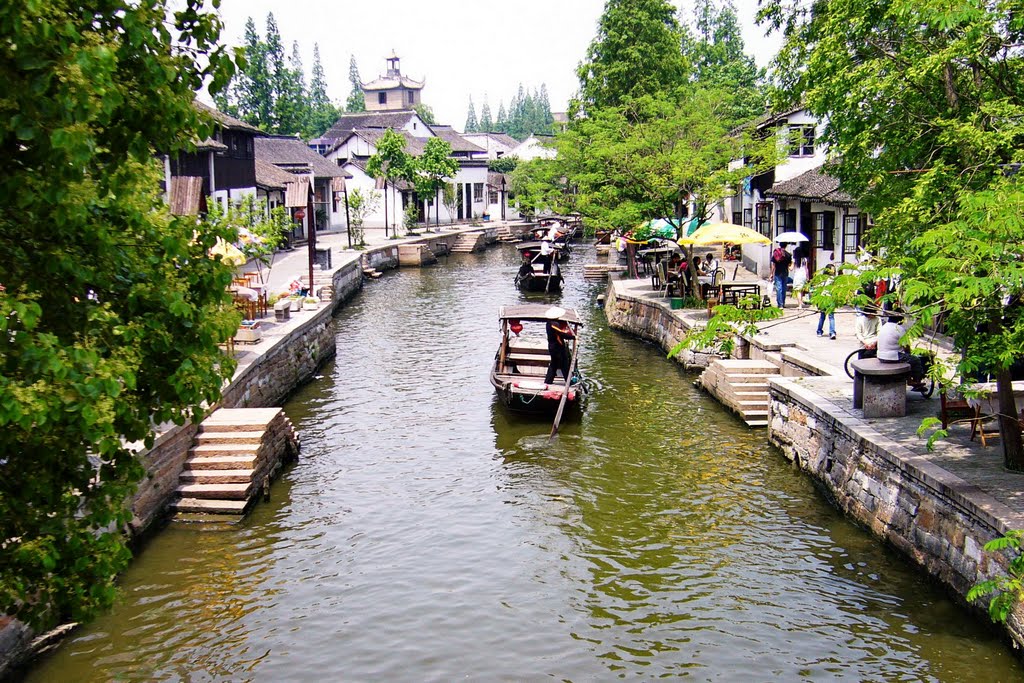
Endowed with another elegant name - 'Pearl Stream' - the little town is the best-preserved among the four ancient towns in Shanghai.
Zhujiajiao Ancient Town (朱家角古镇): Zhujiajiao is characteristic of the many water towns in the upper reach of the Yangtze River. Located in a suburb of Shanghai city, Zhujiajiao is an ancient water town well-known throughout the country, with a history of more than 1700 years.
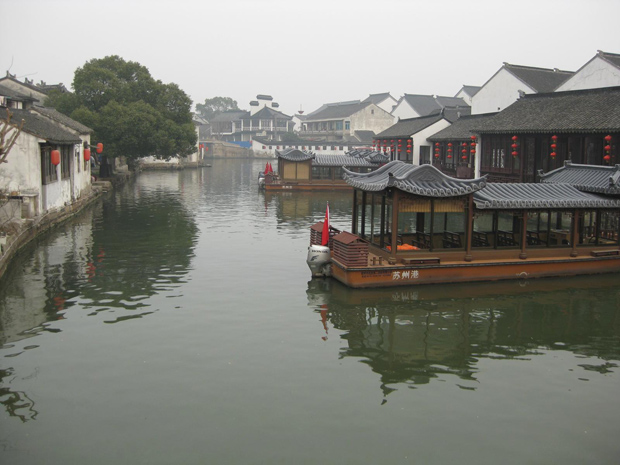
Tongli Ancient Town Boating Trip
Tongli Ancient Town (同里古镇): Tongli is a town in Wujiang county, on the outskirts of Suzhou. A short drive from Suzhou, Tongli offers a step back in time. Crisscrossed by rivers and canals, Tongli has 49 stone bridges and many gardens, temples. Tongli is well known for its system of canals and has been given the nickname "Venice of the East".
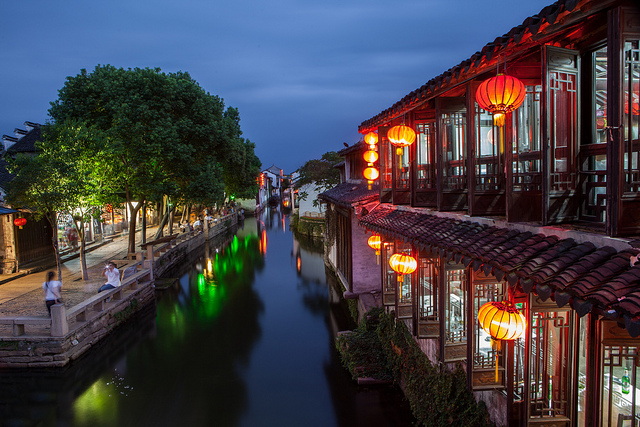
Zhouzhuang is a town in Jiangsu province, China. It is located within Kunshan county-level city, 30 km southeast of Suzhou.
Zhouzhuang Ancient Town (周庄古镇) : Zhouzhuang is a enchanting place. This village features crisscrossing water lanes, ancient bridges and buildings built on and over the rivers. It is a popular tourist destination, classified as a AAAAA scenic area by the China National Tourism Administration. It is one of the most famous water townships in China, noted for its profound cultural background, the well preserved ancient residential houses and the elegant watery views. It has been called the "Venice of the East".
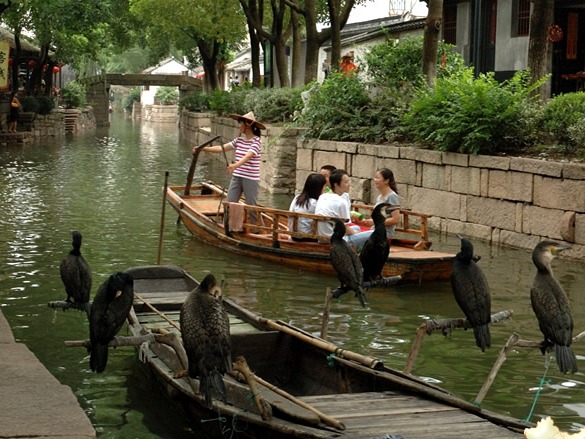
Luzhi Ancient Town is a famous historic old town located in the Wuzhong District, 18 km east of Suzhou, Jiangsu province, China.
Luzhi Ancient Town (甪直古镇): Luzhi is a town of historical air. Generations of scholars, officials have visited this town and left their immortal traces here. It was also known as Puli (甫里), an ancient name for this town. This river town was named after a Tang Dynasty recluse poet Lu Guimeng (陆龟蒙) who retired in this town. Lu Guimong had a pseudonym: Mr. Pu-li (甫里先生). Luzhi is famous for its beautiful waterways and ancient bridges, some of the bridges dated back to the Song Dynasty. A walk in the ancient town Luzhi is said to be a walk into history frozen in time, tranquil and serene.
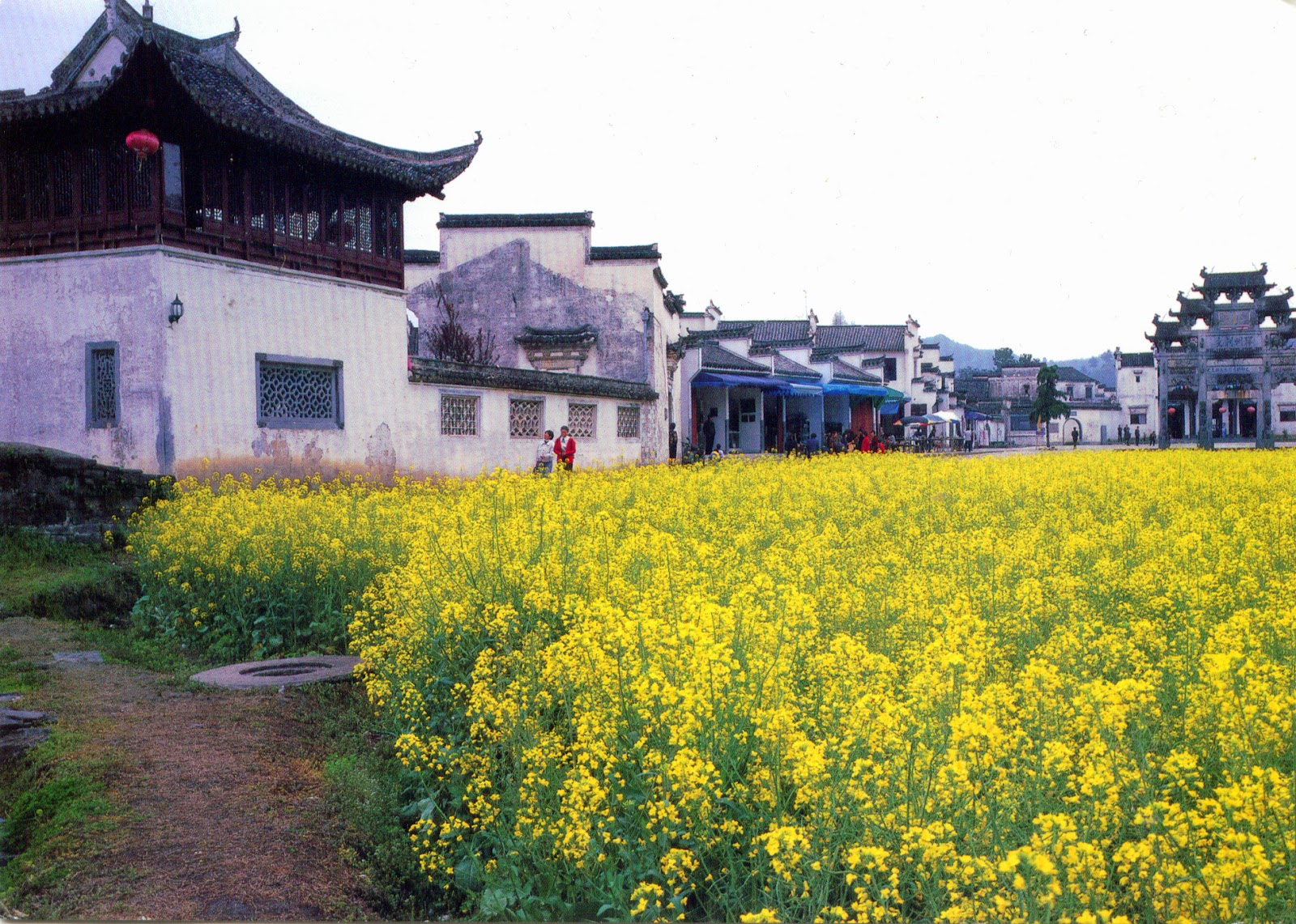
Xidi is a village in southern Anhui province (Yi County), in China, which was declared a part of the "Ancient Villages in Southern Anhui" World Heritage Site by UNESCO in 2000, along with the village of Hongcun.
Xidi Ancient Village (西递镇): At the south foot of the Yellow Mountain, the old trading town of Xidi is gem of the glorious Hui culture. Xidi and Hongcun are two outstanding traditional villages, located in Yi County, Huangshan City in south Anhui Province, with commercial activities as their primary source of income, family and clan-based social organization, and well known for their regional culture. The overall layout, landscape, architectural form, decoration, and construction techniques all retain the original features of Anhui villages between the 14th and 20th centuries.
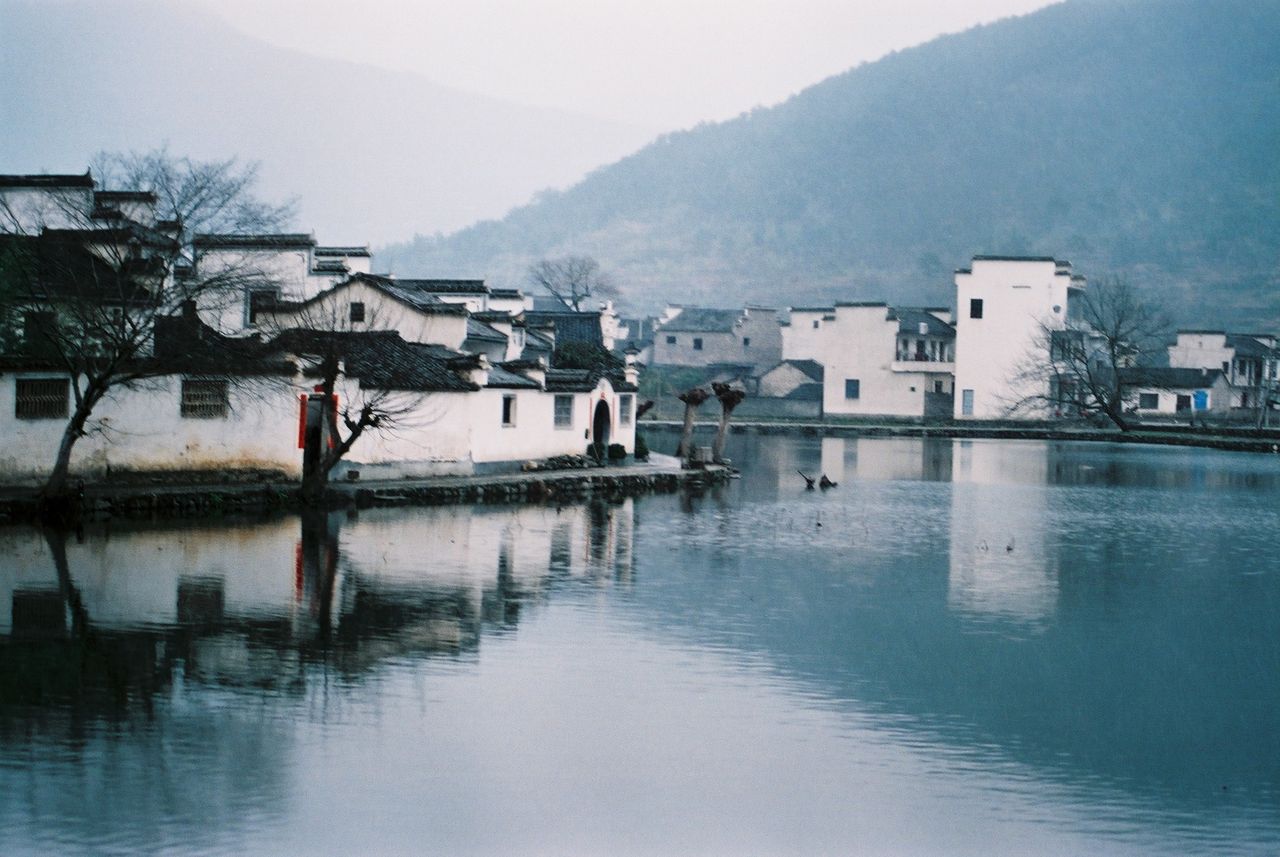
Hongcun is a village in Yi County county, Anhui Province of China, near the southwest slope of Mount Huangshan.
Hongcun Village (宏村): Hongcun has a elaborate web of gravel lanes and a complex watering system through which water from the outside pool can be directed to every family. Hongcun was first founded in the Shaoxing period of the Southern Song Dynasty (about AD. 1131-1162), with a history of about 900 years. Hongcun was first called "Hongcun (another Chinese word with the same pronunciation)". According to the record of Pedigree of Wang Clan, because it was enlarged to the shape of the Taiyi elephant at that time, it was acclaimed as Hongcun. In the Qianlong period of the Qing Dynasty, its name was changed into Hongcun.
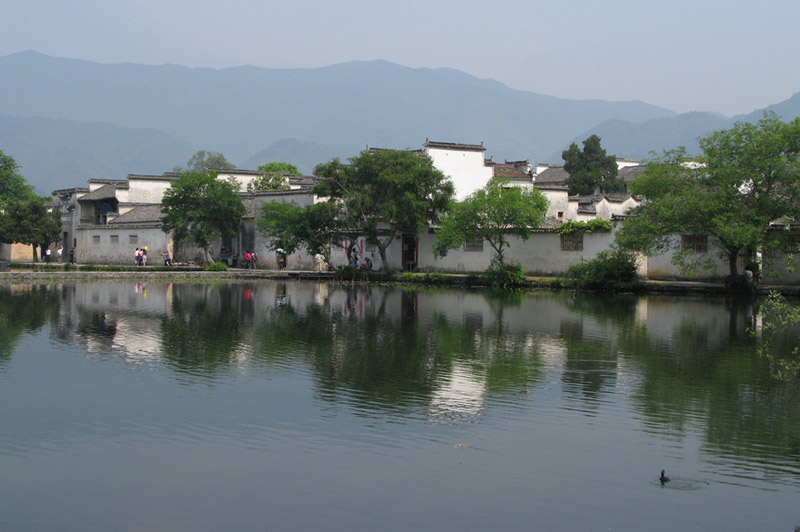
Tunxi Village
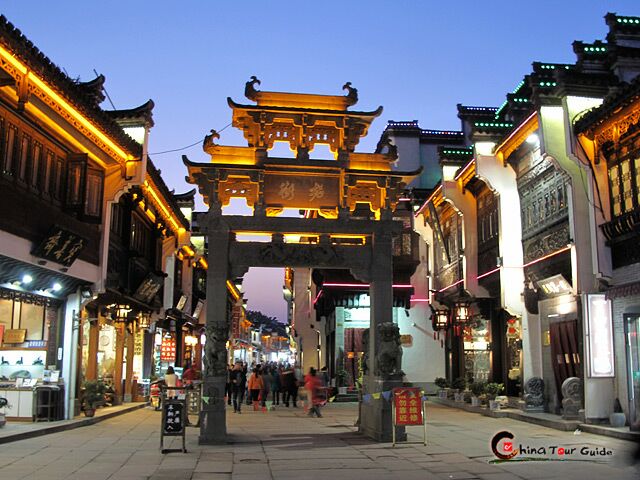
Tunxi Ancient Street Entrance
Tunxi Village (屯溪): Tunxi was an old commercial village, which was flooded with merchants throughout the country. Tunxi is an old trading centre built around the junction of two rivers. It consists of the original part of town, which is along the bank of the Xin’an Jiang and a new quarter situated by the train and bus stations. Tunxi is a prime example of classic architecture of the region and there are two Ming dynasty houses in the backstreets, both examples of the Huizhou style. The design of galleried rooms set over two floors based around a courtyard proved to be so popular that it became the point of reference for houses in central and eastern China.
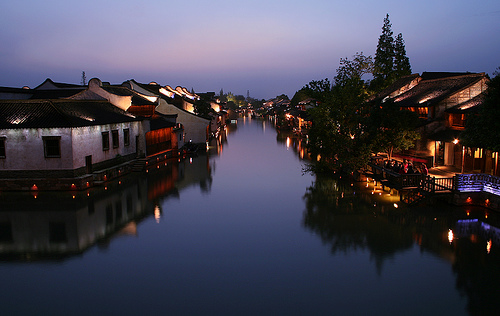
Wuzheng located in the centre of the six ancient towns south of Yangtze River, 17 km north of the city of Tongxiang, Wuzhen displays its history through its ancient stone bridges, stone pathways and delicate wood carvings.
Wuzhen (乌镇): Wuzhen is notable as " home to celebrities" It has nurtured generations of predominant scholars, government officials, brilliant politicians,etc. Wuzhen is a historic scenic town, part of Tongxiang, located in northern Zhejiang Province, People's Republic of China. It lies within the triangle formed by Hangzhou, Suzhou and Shanghai. Covering an area of 71.19 km2 (27.49 sq mi), Wuzhen has a total population of 60,000, of which 12,000 are permanent residents. Read and see more pictures here.
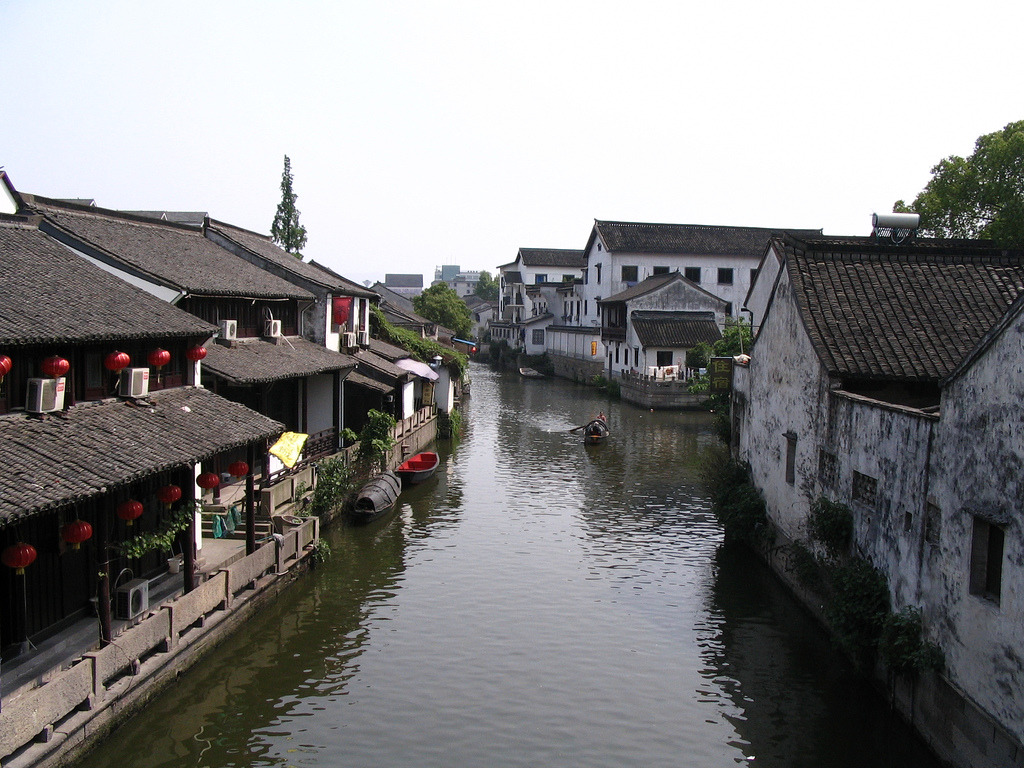
Shaoxing is also known variously as the 'City of Waters,' 'City of Bridges,' 'City of Calligraphy,' 'City of Tea,' and 'City of Scholars.' It gives off an image of an elegant and peaceful locale with deep cultural connotations, south of the Yangtze River.
Shaoxing (绍兴): Intricating webs of canals, multi-shaped stone bridges, ancient buildings lining along the canals and small boats rowed on the river, that's the scene of Shaoxing. Shaoxing has long been a hotbed of Chinese cultural activity, producing such luminary figures as Wang Xizhi, Zhou Enlai, Lu Xun, and Cai Yuanpei. It is widely known throughout China for Shaoxing wine, meigan cai, and stinky tofu, and was recently featured on A Bite of China. Its local variety of Chinese opera sung in the local dialect and known as Shaoxing opera is second in popularity only to Peking opera.
South China
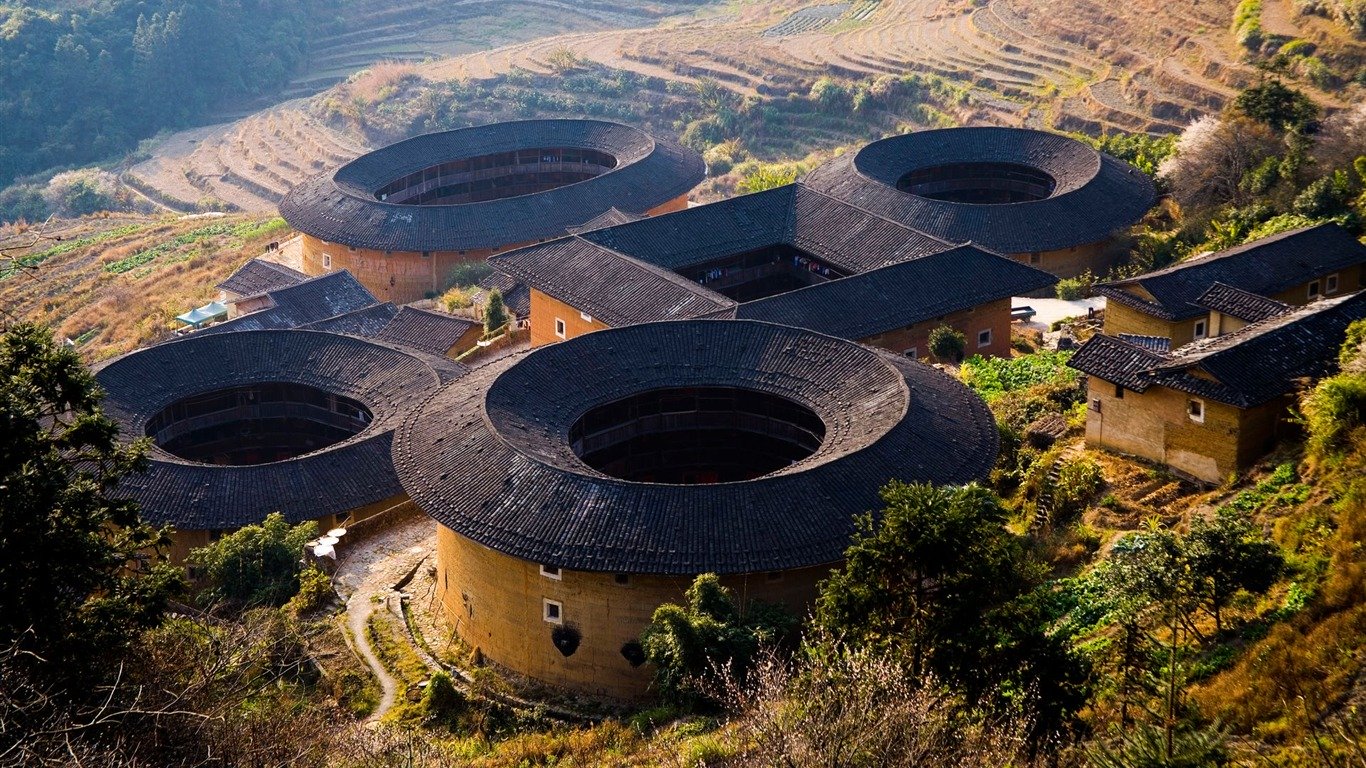
Tianluokeng Tulou Cluster
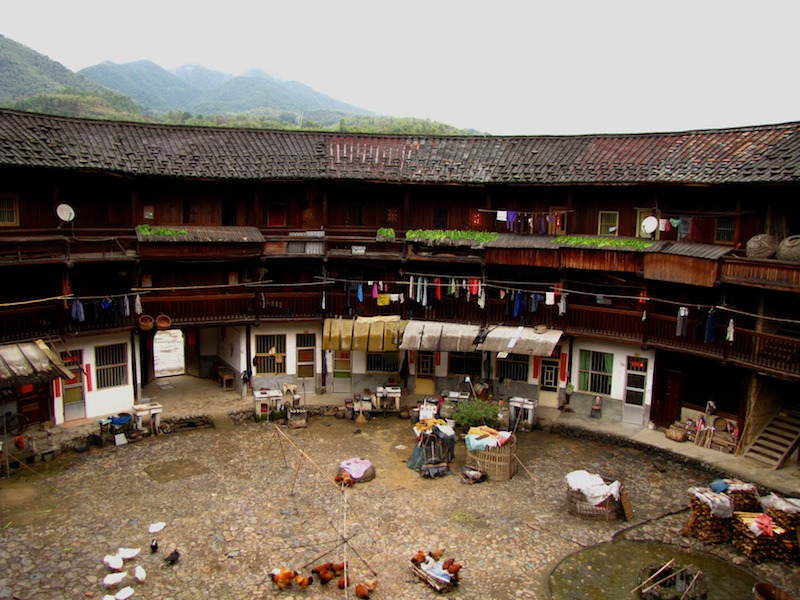
Interior shot of a Fujian Tulou. They were built by the Hakka people as a defensive, fortified structure.
Yongding (永定): Yongding in Fujian Province is known for its unusual architecture called Tulou( earth buildings). These large, circular edifices were built by the Hakka, one ethnic group in China. The architectural art of Tulou enjoys great admiration among architects worldwide.